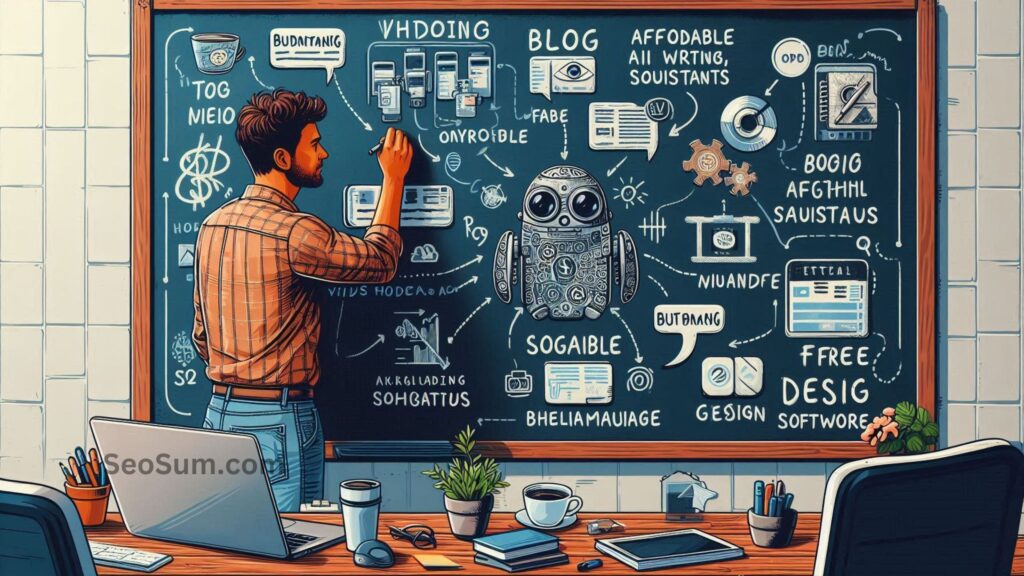You found this blog post, which means our content marketing is working—mission accomplished!
By now, you probably already know that content marketing can drive organic traffic and generate leads at a lower cost than traditional advertising.
But how exactly does it work?
Good news—that’s what we’re here to explain. At a digital marketing agency like Brafton, answering this question is second nature. Let’s dive into why content marketing is so effective and how it can boost your strategy, keep customers happy, and improve your ROI.
Is Content Marketing a One-Size-Fits-All Solution?
Hate to break it to you, but no. There’s no single marketing tool that does everything—just like there’s no tool in your toolbox that can fix everything. A hammer is great for nails, but if you use it to drive screws into a wall, your neighbor might give you a weird look.

That being said, digital marketing does have some unique advantages over traditional advertising. Understanding these differences can help you reach a larger audience and get better results.
Also Read: How to Build Effective Internal Links?
Why Digital Marketing Stands Out: Data & Repurposing Content
One of the biggest perks of digital marketing? The numbers don’t lie. If you focus on organic traffic, your main costs are content production and website maintenance. With pay-per-click (PPC) ads, you can fine-tune your budget and target specific demographics, making every dollar count.

Compare that to traditional advertising, where you’re often paying for vague promises of “exposure” or “brand authority.” Sure, newspapers and TV ads have their place, but they can’t offer the same level of tracking and insights as digital marketing.
But the real secret to maximizing your marketing efforts isn’t just picking the best platform—it’s repurposing your content. A well-structured content distribution strategy lets you get more mileage out of every piece you create.
A lot of people hesitate to reuse content because they feel like they’re repeating themselves. But the reality is, most of your audience won’t see everything you post. Social media platforms filter content, and even your most loyal email subscribers won’t open every email. So go ahead—repost that blog on social media, feature it in your email newsletter, or optimize it for SEO. It’s all about working smarter, not harder.
Also Read: How to Build Links on a Budget?
Content Marketing is a Conversation
Another key strategy? Engagement. You’ve seen it before—YouTubers asking you to “smash that like button,” brands running polls on Instagram, or companies responding to comments on LinkedIn. The more people interact with your content, the better.

Why? Because engagement signals to search engines and social media algorithms that your content is valuable. Google, for example, is now pulling Reddit discussions into search results, proving that conversations matter. By encouraging engagement, you not only boost visibility but also gain deeper insights into what your audience wants.
But here’s what we love most about content marketing: when done right, it brings in organic traffic. If you provide useful, high-quality content, search engines will reward you with more visitors—simple as that.
Of course, content marketing isn’t an overnight success story. You need the right strategy, a solid team, and patience. Brand awareness takes time, but if you consistently put out great content, you’ll build trust, credibility, and valuable industry connections along the way.
Also Read: What are SEO Basics for Small Businesses?
Creating a Cost-Effective Content Marketing Strategy
So now we know why content marketing works. Let’s focus on how to do it efficiently without breaking the bank.

1. Set Clear Goals
Don’t let your marketing strategy turn into another forgotten New Year’s resolution. Define specific, measurable goals that you can control—like improving keyword rankings or optimizing landing pages for better conversions.
2. Understand Your Audience
Your audience isn’t a monolith. While some behaviors are predictable, people don’t always follow industry trends perfectly. Do your own research to understand their preferences, pain points, and motivations so you can tailor your content accordingly.
3. Prioritize Quality Over Quantity
AI has made it easier than ever to churn out content, but that doesn’t mean you should. Instead of flooding the internet with more blog posts or social media updates, focus on creating content that’s valuable, well-researched, and engaging. Sometimes, a single well-written article or an insightful video can do more than 10 mediocre posts.
4. Repurpose Your Best Content
If you have a high-performing blog post, don’t let it collect dust. Turn it into an infographic, a video, or even a podcast episode. Different formats help you reach different audiences while reinforcing your message.
5. Use Budget-Friendly Tools
You don’t need an expensive setup to create great content. There are plenty of free or low-cost tools for graphic design, social media scheduling, email marketing, and analytics. Start lean and scale up as needed.
6. Leverage User-Generated Content
Encouraging your customers to share their experiences isn’t just cost-effective—it’s powerful. User-generated content (UGC) builds trust and fosters a sense of community around your brand. And as we just discussed, engagement matters more than ever for search engine rankings.
7. Track Your Performance & Adjust
Content marketing isn’t a “set it and forget it” strategy. Regularly analyze your results—whether it’s monthly or quarterly—and tweak your approach based on what’s working (and what’s not). This way, you’ll continuously improve and optimize your efforts.
8. Focus on Long-Term Value
If you’re pitching content marketing to a skeptical boss or team, focus on the hard numbers—like the money saved on PPC ads or the increase in returning customers. It’s a long-term investment, but one that pays off over time.
9. Create a Content Calendar
A well-organized content calendar helps keep your marketing efforts consistent and predictable. It also gives you room to experiment with new formats while ensuring you stay on top of industry trends.





